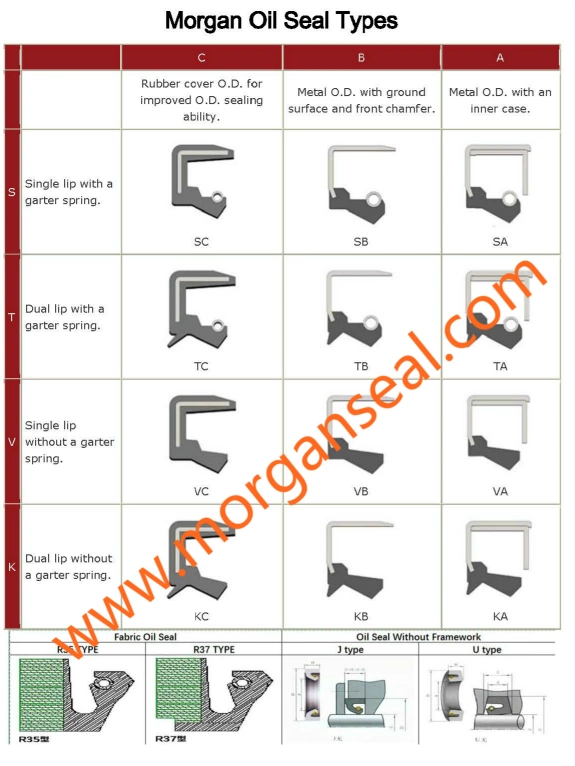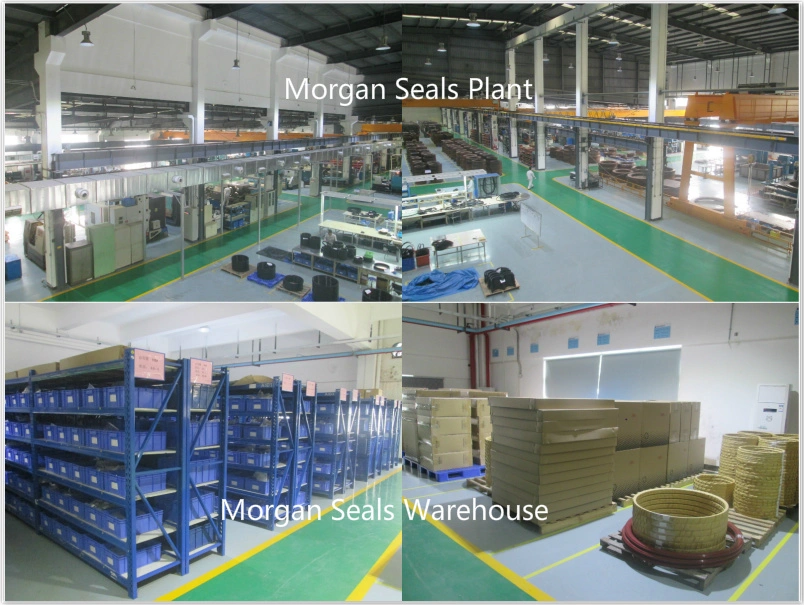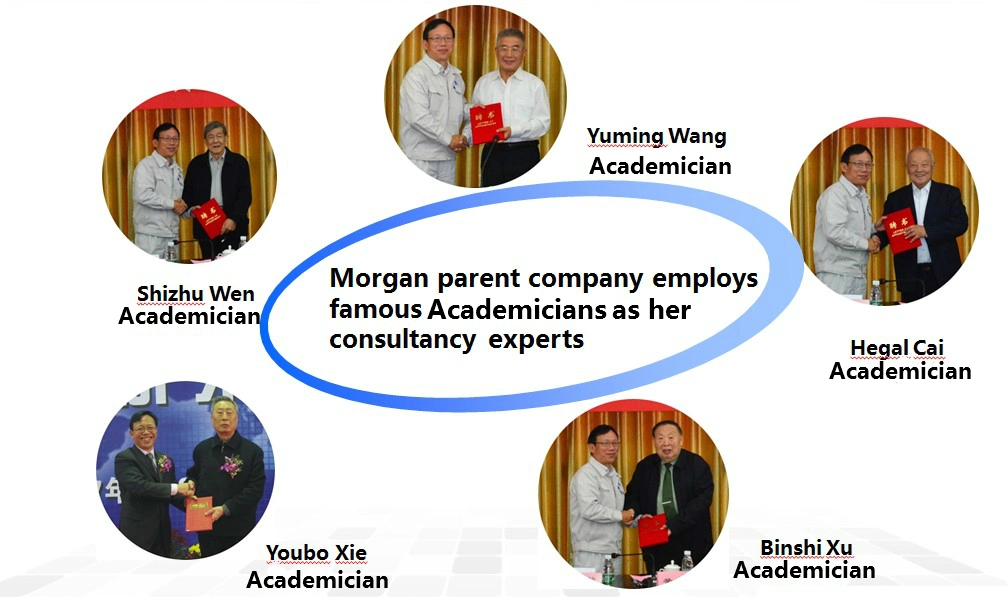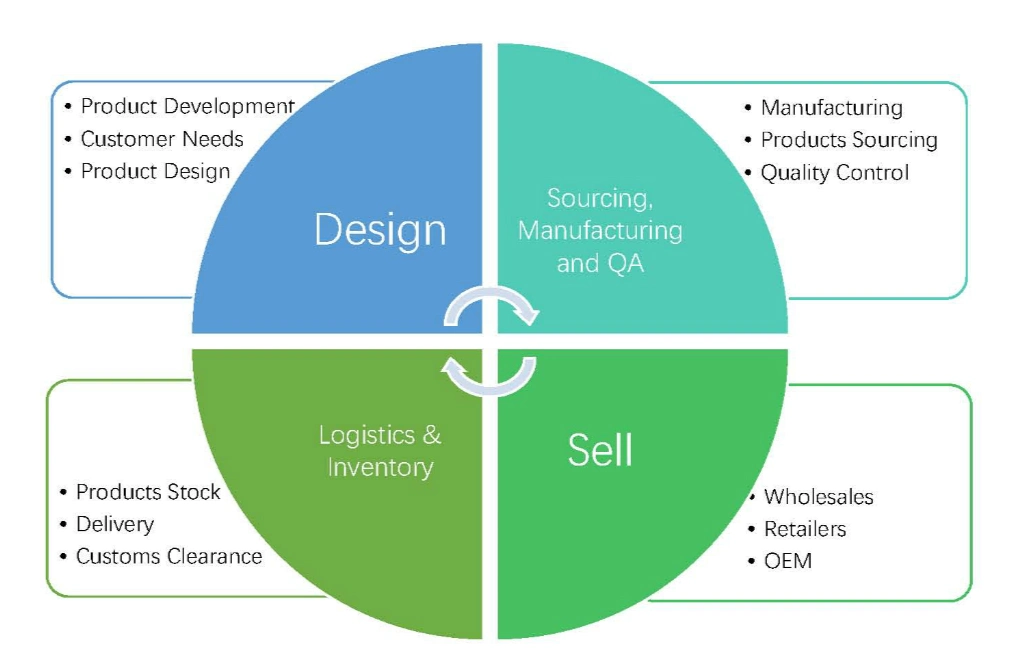
1: What is seal ring
A seal ring is a device that helps join systems or mechanisms together by preventing leakage (e.g. in a plumbing system), containing pressure, or excluding contamination. The effectiveness of a seal is dependent on adhesion in the case of sealants and compression in the case of gaskets.
Rubber seal is a common form of a device for preventing leakage of fluid from one part of a container to another, whether dynamic or static. It is also called as rubber ring, rubber sealing. The catagories of rubber seals includes hydraulic seals(piston ring, rod ring, wipers, guide ring, buffer ring...), rotary shaft seal(oil seal, coolant/water seal...), o rings and so on. Care is needed in design, since poor tolerances can cause extrusion of the seal under pressure.
Rubber seal is a common form of a device for preventing leakage of fluid from one part of a container to another, whether dynamic or static. It is also called as rubber ring, rubber sealing. The catagories of rubber seals includes hydraulic seals(piston ring, rod ring, wipers, guide ring, buffer ring...), rotary shaft seal(oil seal, coolant/water seal...), o rings and so on. Care is needed in design, since poor tolerances can cause extrusion of the seal under pressure.

Material is also critical to performance, the following is the thermal Application of some materials:
Materials
Morgan seal Material Includes Nitrile rubber, fluorine rubber, ethylene propylene rubber, neoprene, chloroprene rubber, silicone rubber and so on.
NBR (Nitrile Butadiene Rubber)
Nitrile rubber (NBR) is the general term for acrylonitrile-butadiene copolymer. The ACN content can vary between 18% and 50%. While the acrylonitrile content is important, the resistance to oil and fuel is more so. Conversely, the elasticity and compression set are not as good. The NBR has good mechanical properties and good wear resistance. However, its resistance to atmospheric agents and the ozone is relatively low.
FKM (fluorinated rubber)
Depending on their structure and fluorine content, fluoroelastomers can vary in terms of chemical resistance and resistance to cold. This FKM-based rubber is very often used for high-temperature hydraulic and pneumatic systems, industrial valves, injection/fuel systems, motor seals and high-vacuum systems.Morgan seal Material Includes Nitrile rubber, fluorine rubber, ethylene propylene rubber, neoprene, chloroprene rubber, silicone rubber and so on.
NBR (Nitrile Butadiene Rubber)
Nitrile rubber (NBR) is the general term for acrylonitrile-butadiene copolymer. The ACN content can vary between 18% and 50%. While the acrylonitrile content is important, the resistance to oil and fuel is more so. Conversely, the elasticity and compression set are not as good. The NBR has good mechanical properties and good wear resistance. However, its resistance to atmospheric agents and the ozone is relatively low.
| Chemical resistance | Aliphatic hydrocarbons (propane, butane, petroleum, diesel fuel) Mineral oils and greases Fire-resistant fluids (HFA, HFB and HFC) Diluted acids, alkaline and saline solutions for low temperatures Water (up to +100°C max) |
| Compatibility issue | Fuels with a high aromatic content Aromatic hydrocarbons (benzene) Chlorinated hydrocarbons (trichlorethylene) Polar solvents (ketone, acetone, acetic acid, ethylene-ester) Strong acids Glycol-based brake fluids Atmospheric and ozone agents |
| Temperature range | -30°C / +100°C (short-term peak at +120°C) -40°C / +100°C with special NBRs |
| Chemical resistance | Mineral oils and greases, ASTM n°1, IRM 902 and IRM 903 oils. Fire-resistant liquids (HFD) Silicone oils and greases Mineral and vegetable oils and greases Aliphatic hydrocarbons (propane, butane, petroleum) Aromatic hydrocarbons (benzene, toluene) Chlorinated hydrocarbons (trichlorethylene) Petrol (including high alcohol content) Atmospheric and ozone agents |
| Compatibility issue | Glycol-based brake fluids Ammoniac gas Organic acids with a low molecular weight (formic and acetic acids) |
| Temperature range | -20°C / +200°C (short-term peak at +230°C) -40°C / +200°C with special FKMs |
As an Ethylene Propylene Diene Monomer copolymer, EPDM is commonly used for hot water taps, cooling systems, brake systems, dishwashers and washing machines.
| Chemical resistance | Hot water and steam up to +150°C Glycol-based brake fluids (Dot 3 & 4) and silicone-based brake fluids (Dot 5) Organic and inorganic acids Cleaning agents, sodium and potassium alkalis Hydraulic fluids (HFD-R) Silicone oils and greases Polar solvents (alcohols, ketones and esters) Atmospheric and ozone agents |
| Compatibility issue | Mineral oils and greases Hydrocarbons Low impermeability to gas |
| Temperature range | -45°C / +150°C (short-term peak at +175°C) |
This HNBR-based elastomer is obtained through selective hydrogenation of the NBR's butadiene groups. It is commonly used for power-assisted steering and for air conditioning.
| Chemical resistance | Aliphatic hydrocarbons Mineral and vegetable oils and greases Fire-resistant fluids (HFA, HFB and HFC) Diluted acids, saline solutions and bases for low temperatures Water and steam up to +150°C Atmospheric and ozone agents |
| Compatibility issue | Chlorinated hydrocarbons Polar solvents (ketones, esters and ethers) Strong acids |
| Temperature range | -30°C / +150°C (short-term peak at +160°C) -40°C / +150°C with special HNBRs |
VMQ (silicone rubber: methyl vinyl polysiloxane)
This FVMQ-based rubber is very often used for fuel systems.| Chemical resistance | Animal and vegetable oils and greases Moderate water temperature Diluted saline solutions Atmospheric and ozone agents |
| Compatibility issue | Superheated steam up to +120°C Chlorinated hydrocarbons with a low molecular weight (trichlorethylene) Aromatic hydrocarbons (benzene, toluene) |
| Temperature range | -60°C / +200°C (short-term peak at +230°C) |
The FVMQ has mechanical and physical properties that are very similar to those of VMQ. However, the FVMQ offers better resistance to fuels and mineral oils. However, resistance to hot air is not as good as that of VMQ.
| Chemical resistance | Aromatic mineral oils (IRM 903 oil) Fuels Aromatic hydrocarbons with a low molecular weight (benzene, toluene) |
| Temperature range | -70°C / +175°C |
ACM (Polyacrylate)
Polymers containing ethyl acrylate (or butyl acrylate) have a small amount of monomer, which is necessary for cross-linking; ACM is a material with better heat resistance than NBR. It is often used for automatic gearboxes.| Chemical resistance | Mineral oils (motor oils, gear box oils, ATF oils) Atmospheric and ozone agents |
| Compatibility issue | Glycol-based brake fluids (Dot 3 & 4) Aromatic and chlorinated hydrocarbons Water and steam Acids, alkalis and amines |
| Temperature range | -25°C to + 150°C (short-term peak at +160°C) -35°C / +150°C with special ACMs |
As a methyl acrylate and ethylene copolymer, AEM is considered to be better resistant to heat than ACM. Its characteristics make it an intermediary between ACM and FKM.
| Chemical resistance | Coolants Aggressive mineral oils Atmospheric agents Water |
| Compatibility issue | Aromatic solvents Strong acids Brake fluids Gearbox oils ATF oils |
| Temperature range | - 40°C à + 150°C |
CR (Polychloroprene)
This CR-based elastomer is used in the refrigeration industry and for ventilation systems. This chloroprene was the first synthetic rubber to be developed and marketed.| Chemical resistance | Paraffinic mineral oils Silicone oils and greases Water and water-based solvents for use at low temperatures Refrigerant fluids Ammoniac Carbon dioxide Atmospheric and ozone agents |
| Limited chemical resistance | Naphthenic mineral oils Aliphatic hydrocarbons (propane, butane, petroleum) Glycol-based brake fluids |
| Compatibility issue | Aromatic hydrocarbons (benzene) Chlorinated hydrocarbons (trichlorethylene) Polar solvents (ketone, acetone, acetic acid and ethylene-ester) |
| Temperature range | -40°C / +100°C (short-term peak at +120°C) |
FFKM (perfluorinated rubber)
FFKM has the best resistance to high temperatures and an excellent chemical inertia. This FKM-based rubber is very often used for high-temperature hydraulic and pneumatic systems, industrial valves, injection/fuel systems, motor seals and high-vacuum systems.| Chemical resistance | Aliphatic and aromatic hydrocarbons Polar solvents (ketones, esters, ethers) Organic and inorganic acids Water and steam High-vacuum systems |
| Problème de compatibilité | Coolants (R11, R12, R13, R113, R114, etc.) PFPE |
| Temperature range | -15°C / +320°C |
| Characteristics/Materials | ACM | AEM | CR | EPDM | FFKM | FKM | FVMQ | HNBR | NBR | VMQ |
| Resistance to abrasion | 2 | 3 | 2 | 2 | 4 | 2 | 4 | 2 | 2 | 4 |
| Acid resistant | 4 | 3 | 2 | 2 | 1 | 1 | 3 | 1 | 3 | 3 |
| Resistance to chemicals | 4 | 2 | 2 | 1 | 1 | 1 | 1 | 2 | 2 | 2 |
| Resistance to cold | 4 | 2 | 2 | 2 | 3 | 4 | 2 | 2 | 2 | 2 |
| Dynamic properties | 3 | 3 | 3 | 2 | 3 | 2 | 4 | 1 | 2 | 4 |
| Electrical properties | 3 | 3 | 3 | 2 | 1 | 4 | 1 | 3 | 3 | 1 |
| Resistance to fire | 4 | 4 | 2 | 4 | 1 | 1 | 2 | 4 | 4 | 3 |
| Resistance to heat | 1 | 1 | 2 | 2 | 1 | 1 | 1 | 1 | 2 | 1 |
| Sealing water | 1 | 1 | 2 | 2 | 2 | 2 | 4 | 2 | 2 | 4 |
| Resistance to oil | 1 | 3 | 2 | 4 | 1 | 1 | 2 | 1 | 1 | 2 |
| Resistance to ozone | 1 | 1 | 2 | 1 | 1 | 1 | 1 | 2 | 4 | 1 |
| Resistance to tearing | 2 | 3 | 3 | 1 | 4 | 3 | 4 | 2 | 2 | 4 |
| Tensile strength | 3 | 2 | 2 | 1 | 2 | 1 | 3 | 1 | 2 | 4 |
| Resistance to water / steam | 4 | 4 | 3 | 1 | 2 | 3 | 3 | 1 | 2 | 3 |
| Resistance to atmospheric agents | 1 | 1 | 1 | 1 | 1 | 1 | 1 | 2 | 3 | 1 |
1. excellent properties 2. Good properties 3. Average properties 4. Poor properties
2. Application RangeApplied in the transmissions of heavy-duty machine and rolling mill, increase the (sealing lip) radial force on the axis of rotation by stretched spring. Sealing medium can be applied to provide adequate lubrication.
3. Characteristics
1- good chemical resistance;
2- good resistance to high and low temperature properties
3 -good corrosion resistance to ozone and climate adaptation
4- high wear resistance
5- low friction
6- low permanent deformation characteristics
7- excellent elasticity
4:Cases:

5: Morgan seals had the biggest vulcanizing machine(4000T) and different kinds of seal moulds. So for the non standard seals, please do not hesitate to contact with us. The following is he the picture of Morgan seals' production Line and warehouse:

6: Our services:
Morgan Seals Research and Development ability is based on her parent firm who has won awards as scientific research achievements for more than 1000 projects and over 200 of them won scientific and technological progress prizes of municipal, provincial, ministerial and national levels. At the same time, it also has one National Certified Laboratory, one National Engineering Research Centers and three Industry Level Inspection Centers.

